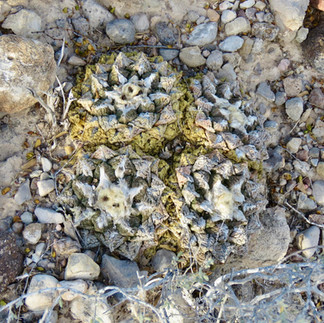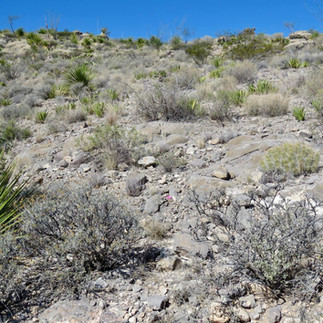Ariocarpus fissuratus in habitat (West TX)
- Hongke Zhu
- Feb 17
- 2 min read
West TX is home to many precious desert plants. We visited various habitats from private ranches to state parks in the Big Bend with some best friends- Steven Brack, Rob Romero,Richard Reynolds and Ian Latella. We saw many happy Ariocarpus fissuratus (aka living rocks cactus) in flowers. The plants and flowers of the same species actually have different features. Indeed there are no two identical leaves in the world.
Cool night and hot sunny days (55-85F) in late autumn. Photos taken on 10/23- 10/26/2024.
We visited habitats from private ranches to public state parks in Presidio County, TX. The weather was sunny and got quite hot during the day (close to 30c). Once the sun sets, it gets chilly very quickly (13c was the coldest). According to Steven, the Big Bend region has a long and hot season every year, about seven months of the year have days close to or well over 35c. Record highs are very close to 50c. A few winter nights freeze hard down to -10c, but these are few occasions. Annual precipitation is near 225mm and almost all comes in the hottest summer months from strong thunderstorms. Ariocarpus have developed to flower in mid-autumn, after the summer rain season for the year has ended. The cooler evening breeze acts as a catalyst for the formation of flower buds on them. Many Ariocarpus bloom from autumn to winter on warm sunny days, attracting wild bees to pollinate the flowers.
After the flowers are pollinated, they slowly turn into small fruits shaped like an acorn. The genus name “Ariocarpus” came from Greek words “aria”, which refers to a type of oak that produces acorns; “carpos” means fruit. The species name “fissuratus” describes the bumpy grooves on the surface of the plant looks like cracking rocks. Autumn to winter is also the time when the plants take a break from vegetative growth. They are dormant in winter, but changes are happening internally with fruits and seeds being made.
I assumed that being spineless, small and slow growing would put the Ariocarpus at a disadvantage when facing hungry herbivores in this harsh desert environment. Surprisingly, they don’t seem to care about arming themselves with spikes and spears like most desert plants do. Turns out that they are not only good at camouflage, but capable of building an internal "biochemical defense line". Ariocarpus produces alkaloids (a class of secondary metabolites with basic nitrogen atoms) and stores them in various amounts from stem to roots, but not in flowers and fruits. (Figures 16a, 16b show a few examples of A. fissuratus flowers got nibbled away by critters, but the plants look intact.) Alkaloids are often poisonous or have a very bitter taste. Some have significant physiological and neurological effects on animals once consumed. There is growing evidence showing that the alkaloids in Ariocarpus are resistance factors against herbivorous insects, bacteria and fungi. In recent years, plant alkaloids have been used to replace industrial chemical pesticides to reduce environmental pollution, pest resistance and preserve beneficial insects. Some well-known examples of plant alkaloids include Nicotine from tobacco plants; Caffeine from coffee and tea trees; Mescaline from the peyote cactus (Lophophora williamsii).







































Comments